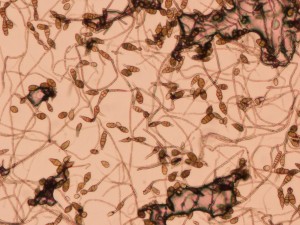Willow rust
Melampsora epitea and M. paradoxa.
Short rotation coppice (SRC) bioenergy crops have gained popularity in recent years as growing public concern provides incentive for farmers to expand the nation’s energy sources. Of these crops, shrub willow (Salix spp.) shows great promise due to its robust woody growth following coppicing, even on marginal lands typically unusable for food production. However, the most devastating disease of this crop, willow rust, can cause up to a 50% loss in yield in susceptible Salix cultivars. To date, willow rust in the Northeast US is known to be caused by three distinct taxa: The Larix-alternating group M. paradoxa, the Abies-alternating group M. americana, and the Ribes-alternating paraphyletic clade yet to be deciphered. However, we still do not have a comprehensive understanding of the degree of diversity within these taxa, making effective disease management extremely difficult. We are interested in exploring these populations throughout the Northeast in the hopes of elucidating vital information necessary for effective cultivar development. Additionally, we are interested in comparative genomics with other closely related Melampsora rust pathogens as a means to explore fundamental molecular processes of the complex obligate biotrophs.
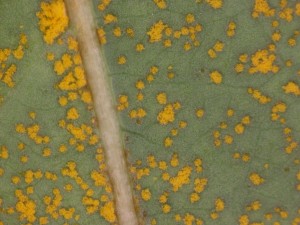
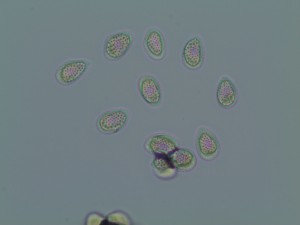
Tomato leaf mold
Passalora fulva
In New York State, high tunnel structures are growing in popularity among area growers as a tool for season extension. Growers are able to plant much earlier in the year and keep their plants much later in the season. Fresh market tomatoes are frequently grown in high tunnels due to their high value. However, the environmental conditions in the tunnel make it perfect not only for growing tomatoes but also for certain diseases and tomato leaf mold is frequently found in high tunnels because it thrives in the warm, humid conditions. Tomato leaf mold, caused by the fungus Passalora fulva is a foliar disease that initially starts as poorly defined pale green lesions. Over time, the lesions will sporulate and have a brown velvety appearance on the underside of the leaf. If infection is severe it can defoliate the plant and reduce photosynthesis. In the summer of 2015, two high tunnels were constructed at our research farm to develop better management strategies. Recently, organic fungicide efficacy trials have been conducted to see if commercially available products can be used to manage this disease in New York. The Smart lab is continuing to learn more about this fungus and work is being done to look at the pathogen diversity in New York State.
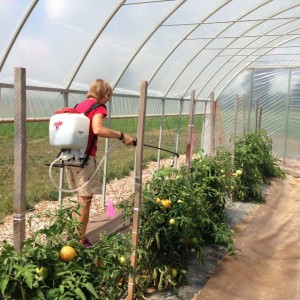

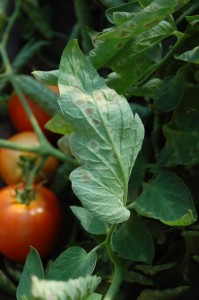
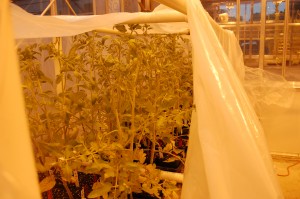
Alternaria Leaf Spot
Alternaria brassicicola
The fungus Alternaria brassicicola is the causal agent of Alternaria Leaf Spot, a common disease of cauliflower, cabbage, and other crucifers. The first symptoms of Alternaria leaf spot are small pinpoint black lesions that enlarge over time to form concentric rings or a bull’s eye lesion with a yellow halo. Alternaria leaf spot is prevalent throughout New York State and is typically found each growing season. New York State isolates of A. brassicicola have been collected and were evaluated using microsatellite markers to determine the population structure. The New York population of A. brassicicola was found to have high diversity but asexual reproduction still remains important for the pathogen in New York State. A better understanding of the population diversity in New York will further help in the development of new management strategies. The isolates were also screened for fungicide sensitivity to azoxystrobin (Quadris). In vitro spore germination assays were completed using fungicide amended media and a range of sensitivities were seen. The cytb gene was also sequenced to determine if any of the known mutations (F129L, G137R, and G143A) for fungicide resistance were present in the population. At this time, none of the known mutations were found in the population indicating that no resistance to azoxystrobin has been found for A. brassicicola in New York State.
